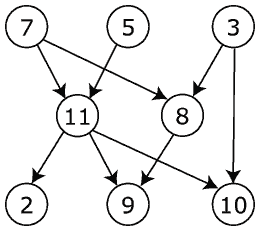
Welcome to the "mono" repo for Matrix, a generic, fine-grained, reactive engine that began as Common Lisp Cells twenty-five years ago.
Of most interest to many will be the application of Matrix to Web and mobile app development, and now ClojureDart/Flutter UI development. We were actively documenting the Web solution in a new mxWeb Training app/tutorial when ClojureDart came along.
Flutter/MX, implemented with ClojureDart, has successfully reached the proof-of-concept stage. Next up is sufficient documentation of Matrix to support those interested in exploring Flutter/MX or any Matrix-wrapped front end.
This repo contains:
- Clojure/ClJS version here;
- a JavaScript version here;
- wrappers at various stages of development for HTML/CSS, ReactJS, and ReactNative; and
- wrappers for XHR and localStorage, with more to come.
Here is our road map, absent requests for specific implementations for evaluation/adoption:
- Matrix overview
- a hands-on, progressive Flutter/MX learning experience, linking to...
- ...reference-style documentation as needed and...
- ...new
clojure.testcontent serving also to demonstrate advanced Matrix features; - the same ^^^ for mxWeb;
- the same ^^^ for Javascript;
- the same for CLJS ReactNative.
Some new/recommended content:
- a tl;dr overview suited to the reactive cognoscenti;
- perhaps the best write-up so far, in the context of TodoMVC;
- a live write-up of a quotations caraousel using the JS version; and
- live, production examples of the JS+HTML Matrix, AskHN Who's Hiring and Common Lisp Cells+Qooxdoo, Tilton's Algebra.
Watch this space for frequent updates, or contact me directly: kentilton at gmail dot com.
Matrix from 30,000 feet
With the Matrix library, global variables or individual properties of objects can be expressed as so-called cells. Cells come in two flavors. Formulaic cells use standard HLL code to compute their value from other cells. For a dead simple example, the TodoMVC rules mandate we apply the "completed" class to to-do LIs if and only if the user has marked them as, well, completed:
(li {:class (c? (when (<mget todo :completed)
"completed"))
...}...)
Above we see the CSS class tracking the completed property of the lexically closed-over todo, another Matrix-aware object lifted from window.localStorage. (mget <x> <y>) establishes dependency of the enclosing formula on property y of x. Not shown: a so-called observer (discussed below) automatically propagates freshly computed values of class to the actual DOM.
Input cells are assigned new values by conventional imperative code, usually in an event handler.
(input {:class "toggle" ::tag/type "checkbox"
:checked (c? (<mget todo :completed))
:onclick #(mswap! todo :completed)}) ;; <-- mswap!> does the swap and then triggers dataflow to dependents
mswap! is a dataflow "writer" that mirrors mget. It causes all direct or indirect dependents to recalculate. (Note also the checked attribute, another example of a property following the completed property of our todo.)
Why the "input" characterization? It cannot be rules all the way down. These cells are the inputs into the dataflow from outside imperative code. The diagram below is of a directed acyclic graph depicting the flow that arises when input cells change and their new values are consumed by formulaic cells (when their recomputation is triggered). In the diagram below, cells 7, 5, and 3 would be the input cells.

The dataflow engine propagates each new input value by recursively recomputing dependent formulaic cells in a glitch-free cascade. We get useful behavior out of this cascading calculation via "on change" callbacks. We name these callbacks "observers" (not to be confused with RxJS or MobX observables). Much simplified:
(defmethod observe-by-type [:tiltontec.tag.html/tag] [slot me new-value prior-value _]
(case slot
:hidden (set! (.-hidden dom) new-value)
:class (classlist/set dom new-value)
:checked (set! (.-checked (tag-dom me)) new-value
....)))
In contrast with RxJS and MobX, Matrix observers work off to the side, if you will, as ancillary participants tapping into the main flow to produce tangible behavior. Think "UN observer vs. combatant".
We refer to the combination of cascading recomputation and consequent observation as dataflow. Objects with Cells as properties are called models in the sense of a working model, this because these objects change and act autonomously as driven by dataflow. Hence the md- prefix, by the way.
Matrix includes support for arranging models as a tree in which a model can have zero or more children and children have one parent and have a reference to that parent. This omni-directional linkage means any cell formula or observer can reach any other cell in the tree of models; they have perfect information. We call a population of objects connected by interdependent cell properties a matrix in concordance with this definition (forget the otherwise fine movie):
ma·trix ˈmātriks noun an environment in which something else takes form. Origin: Latin, female animal used for breeding, parent plant, from matr-, mater
In the case of TodoFRP, that something else is an interactive do-list.
A major design goal was ease of use by programmers. Dependencies are established transparently by simply reading a property. Dataflow is triggered simply by assigning a new value to an input cell. Shuffle the code during a refactoring and the pub/sub moves with it.
Can you improve this documentation?Edit on GitHub
cljdoc builds & hosts documentation for Clojure/Script libraries
| Ctrl+k | Jump to recent docs |
| ← | Move to previous article |
| → | Move to next article |
| Ctrl+/ | Jump to the search field |